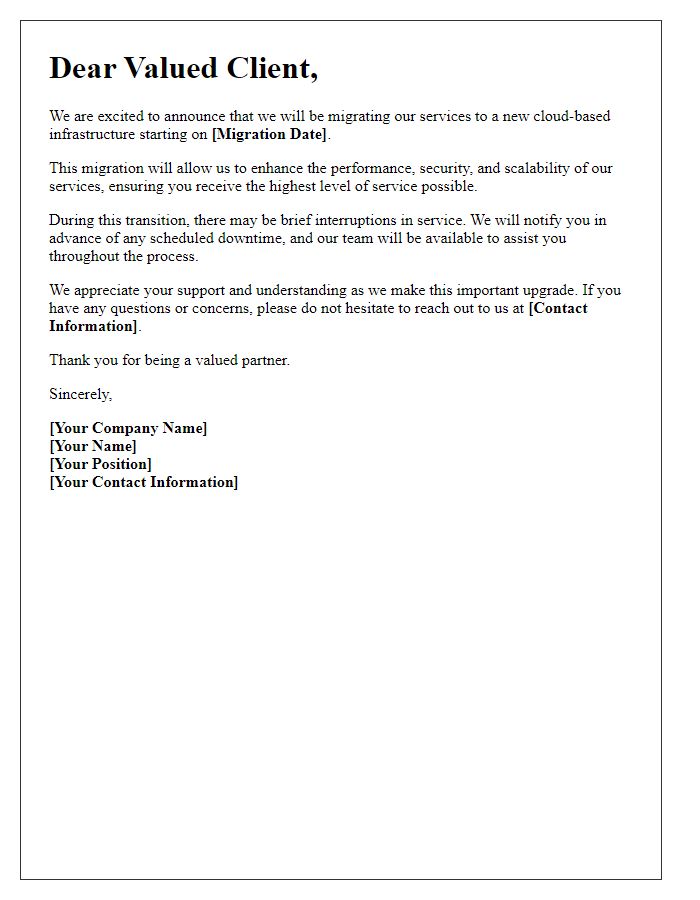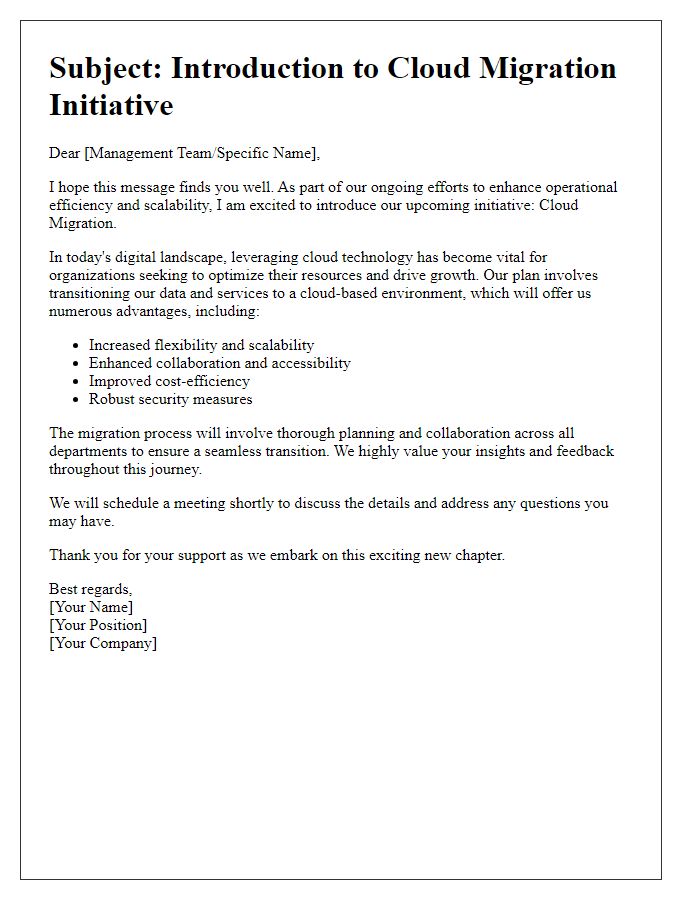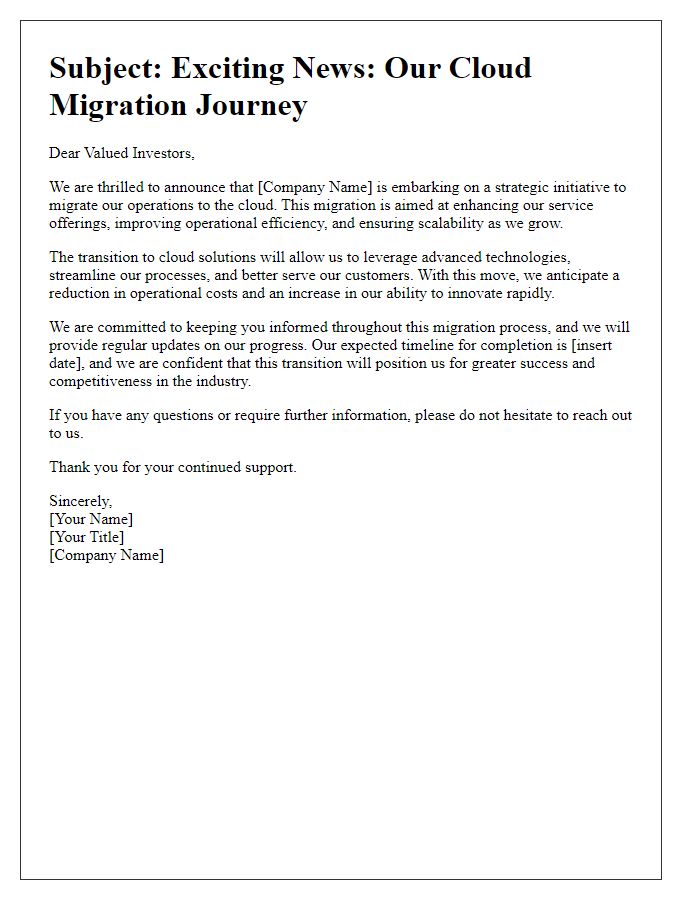Are you ready to take your business to new heights? We're excited to announce our upcoming cloud migration, a step that promises to enhance efficiency and improve our service delivery. By moving to the cloud, we'll be unlocking a multitude of benefits, including increased flexibility and enhanced security for your data. Stay tuned as we share more about this transformative journey and how it will impact you!

Company Introduction and Purpose
XYZ Corporation, a leading provider of innovative technology solutions, is excited to announce its upcoming cloud migration project. This strategic initiative aims to enhance our operational efficiency and improve customer experiences by transitioning our services to a cloud-based infrastructure. Cloud computing provides scalable resources, secure data storage, and increased flexibility. The transition is expected to streamline workflows, minimize downtime, and enable real-time collaboration among our team members across multiple locations. By embracing cloud technology, XYZ Corporation is committed to delivering exceptional value and innovation to our clients in the rapidly evolving digital landscape.
Benefits of Cloud Migration
Cloud migration presents numerous advantages for organizations, such as increased scalability, flexibility, and cost-efficiency. By transitioning to cloud services like Amazon Web Services (AWS) or Microsoft Azure, businesses can effortlessly adapt to fluctuating resource demands, ensuring optimal performance during peak periods (e.g., Black Friday sales). Enhanced collaboration tools allow teams distributed across different geographical locations to work seamlessly together, thus fostering innovation and productivity. Additionally, cloud migration can significantly reduce IT costs, as organizations eliminate the need for extensive on-premises hardware, leading to savings on maintenance and energy consumption. Improved data security measures provided by cloud vendors (often compliant with regulations like GDPR) further protect sensitive information, mitigating risks associated with data breaches. Overall, embracing cloud technology empowers companies to focus on strategic initiatives rather than managing outdated infrastructure.
Migration Timeline and Schedule
As part of our upcoming cloud migration initiative, we will implement a structured timeline to ensure a seamless transition to our new cloud environment. The migration will occur over a four-phase schedule, starting on December 1, 2023, with system assessments, followed by data migration commencing on December 15, 2023. The next phase will involve application testing and optimization, set for January 5 to January 15, 2024. Finally, we anticipate the final cutover and go-live date on January 20, 2024. This migration will enhance our operational efficiency, ensuring scalable resources and improved data security for our users. Regular updates will be communicated to the team throughout this process.
Impact on Users and Stakeholders
The upcoming cloud migration will significantly enhance operational efficiency and user experience. Scheduled for January 2024, this transition to Amazon Web Services (AWS) aims to accommodate growing data demands and improve scalability. Users may experience brief downtime during the migration process, yet dedicated communication channels will be established to keep all stakeholders informed of real-time updates. The new cloud infrastructure promises faster data retrieval speeds and enhanced data security measures, such as encryption protocols exceeding industry standards. Key functions, such as user authentication and data analytics, will benefit from the cloud's advanced computational capabilities. Stakeholders should prepare for training sessions to familiarize themselves with the new system features, ensuring a smooth transition and minimal disruption to ongoing projects.
Support and Contact Information
Cloud migration represents a significant shift for organizations, as it involves moving data and applications to cloud environments such as Amazon Web Services (AWS) or Microsoft Azure. This process often entails careful planning and execution to ensure minimal disruption, with migration strategies including lift-and-shift or refactoring. With successful migration, businesses can achieve scalability, enhanced collaboration, and cost efficiency. Support teams, including IT specialists and cloud architects, play a crucial role, providing guidance through platforms like ServiceNow and support hotlines. Regular communication ensures that all stakeholders, from department managers to end users, remain informed and engaged during this transformative phase. Contact information for support should include dedicated phone numbers and email addresses for immediate assistance, ensuring seamless transition and operation in the new cloud environment.













Comments